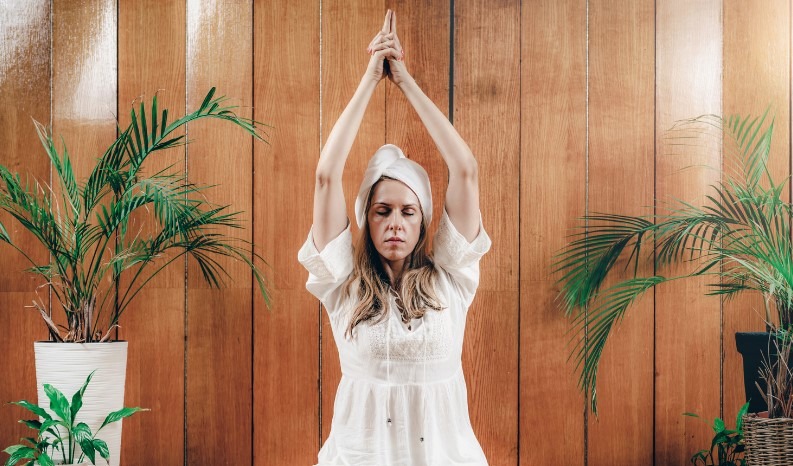Welcome to our in-depth exploration of Kundalini Yoga. While this spiritual practice offers numerous benefits, it’s essential to understand the potential dangers associated with it. By raising awareness about the risks and precautions, we aim to help you practice Kundalini Yoga safely and responsibly.
Kundalini Yoga involves awakening the dormant Kundalini energy located at the base of the spine. This practice combines physical postures, breathing exercises, chanting, and meditation to activate and raise this energy through the body’s energy centers known as chakras.
Improper practice and lack of guidance during Kundalini Yoga can lead to various risks and health hazards. For instance, intense stretching and bending of the spine can result in severe spine-related injuries if performed incorrectly. Additionally, some individuals may experience mental health issues or become overly fixated on their spiritual goals, leading to depression and anxiety.
To ensure your safety during Kundalini Yoga practice, it is crucial to follow proper guidelines. Learning from experienced teachers, listening to your body, and avoiding overexertion are key. By approaching the practice with caution and maintaining a balanced mindset, you can gain the transformative benefits of Kundalini Yoga while minimizing the potential dangers.
Key Takeaways
- Practice Kundalini Yoga with caution to prevent potential injuries and health hazards.
- Seek guidance from experienced teachers who can provide proper instruction and support.
- Listen to your body and avoid pushing yourself beyond your limits.
- Maintain a balanced approach to the practice and be mindful of your mental and emotional well-being.
- Separate myths and misconceptions from reality to gain a clear understanding of Kundalini Yoga.
What is Kundalini Yoga and How Does it Work?
Kundalini yoga is a powerful and transformative form of yoga that combines physical postures, breathing techniques, chanting, and meditation to awaken the dormant energy known as Kundalini. This ancient practice is centered around the belief that there is a coiled serpent power, the Kundalini energy, located at the base of the spine.
The primary objective of Kundalini yoga is to activate and raise this energy through the different chakras, which are energy centers that run along the body’s central axis. As the Kundalini energy ascends, it purifies and awakens each of the seven chakras, bringing balance and harmony to the mind, body, and spirit.

Awakening the Kundalini energy is believed to lead to profound spiritual enlightenment and a deeper connection with one’s true self. It is a journey of self-discovery, self-healing, and self-transformation. Through the practice of Kundalini yoga, individuals can tap into their inner power and unlock their full potential.
The Potential Dangers of Kundalini Yoga
While practicing Kundalini Yoga can lead to profound personal growth and self-discovery, it is essential to be aware of the potential risks and dangers associated with this spiritual practice. It is important to approach Kundalini Yoga with caution and take appropriate measures to ensure your safety and well-being.
Potential Injuries
A main concern in Kundalini Yoga is the potential for injuries, especially if the intense stretching and bending of the spine are not performed correctly. Improper alignment or overexertion can result in serious spine-related injuries such as herniated discs, muscle strains, or nerve impingements. To minimize the risk of injury, it is crucial to practice under the guidance of experienced teachers who can provide proper instruction and assist you in maintaining correct form.
Mental Health Concerns
Kundalini Yoga’s intense spiritual nature may also pose potential risks to mental health. Some practitioners may develop obsessive thoughts and behaviors related to achieving spiritual goals, leading to anxiety, depression, or emotional imbalance. It is important to approach the practice with mindfulness, maintaining a balanced perspective and avoiding an overly fixated or obsessive mindset.
“Practicing Kundalini Yoga without proper guidance can lead to physical and mental harm. It is crucial to approach this powerful practice with respect, mindfulness, and caution.” – Gurudev Singh
Seeking Proper Guidance
To mitigate the potential dangers of Kundalini Yoga, it is highly recommended to seek guidance from experienced teachers who have extensive knowledge and understanding of the practice. They can provide proper instruction, ensure correct alignment, and notice any signs of overexertion or discomfort. Open communication with your teacher about any concerns or limitations is also crucial for practicing safely.

Remember to be mindful of your body’s limitations and never push yourself beyond what feels comfortable or safe. Listen to your body’s signals and make modifications or take breaks as needed. Prioritizing your well-being and taking necessary precautions can help ensure a safe and beneficial Kundalini Yoga practice.
How to Practice Kundalini Yoga Safely?
To practice kundalini yoga safely, it is important to follow certain guidelines. Firstly, it is recommended to learn from experienced teachers who can provide proper instruction and guidance. They can ensure that you are performing the postures and exercises correctly, minimizing the risk of injury.
It is also important to listen to your body and not push yourself beyond your limits. If you experience any pain or discomfort, modify or skip the poses as needed. Taking breaks and resting when needed is also crucial to avoid overexertion.
Furthermore, it is essential to be aware of kundalini yoga precautions and the potential risks associated with the practice. Understanding the proper alignment and technique for each pose can help prevent injuries. Additionally, being mindful of your breathing patterns and avoiding any excessive strain on the body can contribute to a safe practice.
When practicing kundalini yoga, it is crucial to maintain a balanced approach and not become overly obsessed with achieving spiritual goals. Remember that yoga is a journey, and each individual’s progress may vary. Practicing with a sense of acceptance and self-care can help maintain mental and emotional well-being.
Understanding the Myths and Misconceptions About Kundalini Yoga
There are several myths and misconceptions surrounding kundalini yoga that can contribute to the perception of it being dangerous. It’s important to debunk these myths and gain a clear understanding of the practice.
By separating the myths from the reality, you can develop a more accurate understanding of kundalini yoga and its potential for spiritual awakening.
| Myth | Reality |
|---|---|
| Kundalini yoga can spontaneously cause a spiritual awakening, leading to mental health issues. | The awakening of the kundalini energy is a gradual process that requires discipline and proper guidance. It does not cause spontaneous spiritual awakenings. |
| Kundalini yoga is only for advanced practitioners. | Kundalini yoga can be modified and adapted for practitioners of all levels, ensuring a safe and beneficial practice. |
